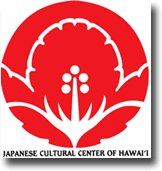Community website by MBC/Ernest Abrams. Call 808-739-9797 for advertising/sponsorship#KaimukiHawaii
Kaimuki, Hawaii
Event Calendar ItemShichi Go San - Keiki Kimono Dressing
- Tweet
- Type: Cultural

Date: Sunday - 11/9/2008
Time: 9:30 AM
Location:
Japanese Cultural Center of Hawai'i
2454 S. Beretania Street
Honolulu, HI 96826
View Map
Cost: See description
Kimono dressing cost is $70 for non-members; $56 for JCCH members. Photo packages are sold separately (packages range from $20 -$55 depending on amount and size of portraits). Make up and hair dressing not included. For more information or to make reservations, call the JCCH at (808) 945-7633 or email info@jcch.com.
This year at the JCCH, children can don elegant kimono, obi (long sash) and zori (sandals) provided by Masako Formals and pose for a portrait taken by a professional photographer from King Digital Imaging Center in honor of Shichi Go San. A reverend from the Izuma Taishakyo Mission of Hawaii will also perform a traditional Shint¯ blessing during the event. The blessing is optional.
In Japan, odd numbers?such as seven, five and three?are considered good luck. In medieval times, aristocratic and bushi (warrior) families celebrated the growth of infants into healthy boys and girls by stopping the shaving of their hair at age three; boys, at age five, put on hakama (loose trousers worn over kimono) for the first time in public; and girls, at age seven, began using obi to tie their kimono instead of cords.
By the Edo period (1603-1868), this practice spread to commoners, who began visiting shrines to have prayers offered by priests. The Shichi Go San customs practiced today evolved in the Meiji era. November 15 was chosen for this celebration because it was considered the most auspicious day of the year, according to the traditional Japanese calendar. Because the date is not a national holiday, most families pay their Shichi Go San respects on the weekend just prior to or after November 15.
Today in Hawai?i, this coming-of-age custom has evolved to encompass all children regardless of their age.
Questions? Ready for an appointment?
Featured Product/Service
Powered by MBC CalendarMaker
Events subject to change without notice
- RELATED LINKS
 Kaimuki Hawaii.Com Home Page
Kaimuki Hawaii.Com Home Page
View our featured events, news, businesses and primary links on our home page. Featured Sponsors
Featured Sponsors
Great offers from our sponsors who support the Kaimuki Honolulu, Hawaii community. More...
Kaimuki Hawaii Directory
View Kaimuki, Hawaii primary directories. businesses, non profits, public, government and jobs. Calendar
Calendar
Check out things to do in Kaimuki on the calendar of events. News and Newsletters
News and Newsletters
Keep up with the latest news and happenings in your Kaimuki community. Kaimuki Hawaii Featured Pages
Kaimuki Hawaii Featured Pages
View our directory of feature pages showcasing all the great things Kaimuki, Honolulu, Hawaii has to offer. Go Green in Kaimuki, restaurants, shopping, WiFi Hot Spots, fitness, health, real estate, home and garden, 80+ more directories... More...
Please send questions about this website to
Copyright© 2005 - 2018 KaimukiHawaii.com. All rights reserved.
Terms of Use / Legal Disclaimer / Privacy Statement
Site Designed and Managed by MacBusiness Consulting
Terms of Use / Legal Disclaimer / Privacy Statement
Site Designed and Managed by MacBusiness Consulting
